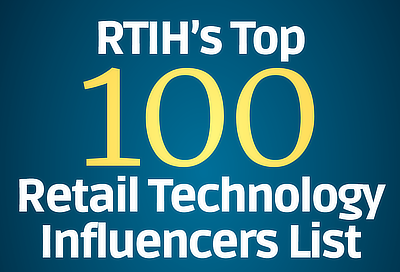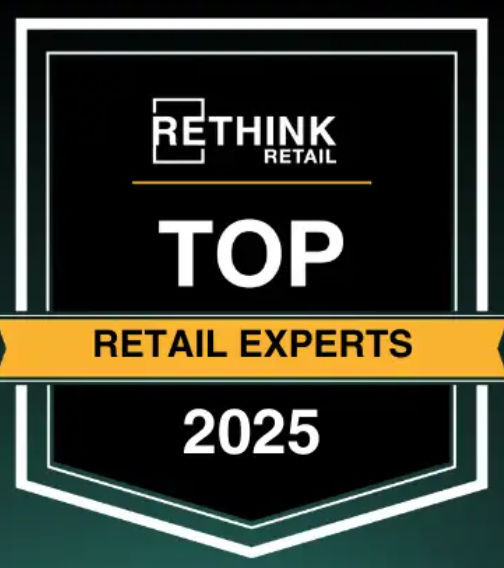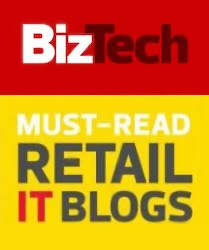Research
- April 25, 2021
Deloitte Global Powers of Retailing 2021
Aggregate retail revenue for the Global Powers of Retailing Top 250 companies was US$4.85 trillion in FY2019. A new section provides a short preview looking at how the COVID-19 pandemic has impacted the retail revenue growth of the Top 25 global retailers. A favorite annual report.
- April 19, 2021
Robots in Retail: Examining the Autonomous Opportunity
73% of large retailers say the importance of using robotics in warehouses or distribution centers has increased due to factors that emerged during the pandemic. 47% of retailers will be involved with an in-store robotics project within the next 18 months. -from braincorp.com
- April 11, 2021
Retail’s Frictionless Future
Each of these trends were already in place – the pandemic simply added rocket fuel to the technology adoptions. Contactless payment options are expected to grow 168% and self-checkout installs are expected to grow 136% during the next two years across all retailers. -from ihlservices.com
- April 04, 2021
RIS News Annual Retail Tech Study - Building the Future-Proof Enterprise
The retail landscape was thrown for a loop over the past 12 months, and although things are stabilizing across the industry with a return to “normalcy” in our reach, the industry is still radically different than it was a year ago. Not surprisingly, survey takers describe the current state of retail as “changing,” “transforming,” “in flux” and “unpredictable.”
- March 28, 2021
Disruption & Uncertainty – The State of Europe Grocery Retail 2021
The coronavirus pandemic has reshaped the European grocery-retail landscape at unprecedented speed and scale. Five major forces at the heart of this change came together and reinforced each other. In the “next normal,” grocery retail will once again need to rebalance its role within the broader ecosystem with restaurants and other options. -from McKinsey & Company
- March 21, 2021
The Shopper Speaks: 3 secrets why curbside will not die post-COVID-19
64% of online shoppers intend to order more online in the next six months. Year over year, all metrics point to increased usage and curbside sees the greatest gains (35% vs. 13%). 75% of surveyed shoppers completed an in-store or curbside pickup in the past six months with 22% completing 11 or more. -from DigitalCommerce360
- March 14, 2021
Retail Speak: Seven Imperatives for the Industry
- March 07, 2021
The IBM CEO Study: Find your Essential – How to Thrive in a Post-Pandemic Reality
What we’ve learned is extraordinary. We discovered eye-opening surprises that reflect just how unprecedented the next era will be, with new priorities and new areas of focus. From emerging expectations around remote work to accelerated technological adoption, the leading practices of yesterday and requirements of tomorrow are far from aligned.
- February 28, 2021
The Future of Grocery and CPG - Grocery IT Benchmarking Study
The pandemic has changed the food and consumer goods retailers and manufacturers permanently. The good news is that the pandemic has accelerated technology investments that were long overdue. The bad news is the peak and surge exposed many issues that were hidden before. And as long as these problems are not fixed, the margin erosion in this new world is akin to continually picking a scab. The wound never heals.
- February 21, 2021
Brand Finance Global Top 500 Brands Value for 2021
Apple is named world’s most valuable brand. Tesla leaves traditional auto marques behind with fastest brand value growth. E-commerce brands thrive in new normal, with Alibaba.com doubling in brand value, but chain retailers cash in on home delivery too – Walmart climbs up to 6th rank
- February 14, 2021
Global Economy and China's Economy in 2021 -PwC CN
Global economy would shrink by 3% in 2020 (IMF forecasted 3% growth at the beginning of the year). China is the only major economy for which GPC is expected to rise. Retail consumption has been gradually improving in China with online now accounting for more than 25% of total retail sales. -from Pwc CN
- February 07, 2021
RIS News 2021 Store Experience Study
This favorite retail industry annual study examines the trends for the coming year in the area of technological advances that impact retail operations, growth plans, budgets and planned technology purchases for 2021 and beyond. Look for my companion blog discussing it. -from RISNews
- January 31, 2021
Playing better in 2021: Retail -JLL
In retail as in life, the phrase “adapt or perish” applies. The coronavirus has accelerated consumers’ preferences and even demands, launching the industry years into the future. The question for retailers is: who’s ready to make that time travel journey? -from JLL
- January 24, 2021
Top 10 Global Consumer Trends 2021 -Euromonitor International
Resilience and adaptability are the driving forces behind the top global consumer trends in 2021. The pandemic created, influenced or accelerated each of these 10 trends, forever altering consumer behaviour. Despite the hardships faced in 2020, consumers have not given up. They continue to find their voice and push forward to advocate for a better tomorrow. -from Euromonitor International
- January 17, 2021
2021 retail industry outlook -Deloitte
Retail executives seem to agree that an economic recovery to pre-pandemic trajectory levels will take time, with six in 10 expecting recovery in the next one to two years—but a quarter see a longer timeline of two to five years. The old playbook and rules will likely have to be thrown out, and bold, differentiated action will be required to stand out from the competition. -from Deloitte
Page 11 of 34
















